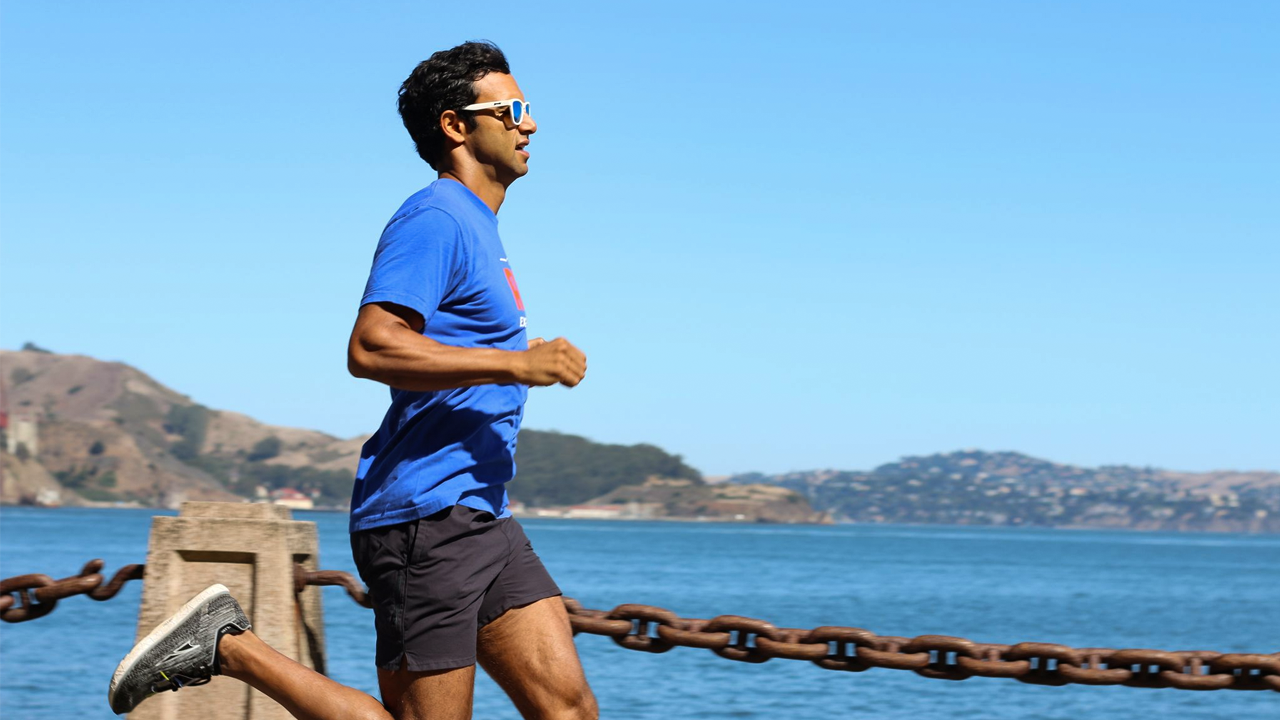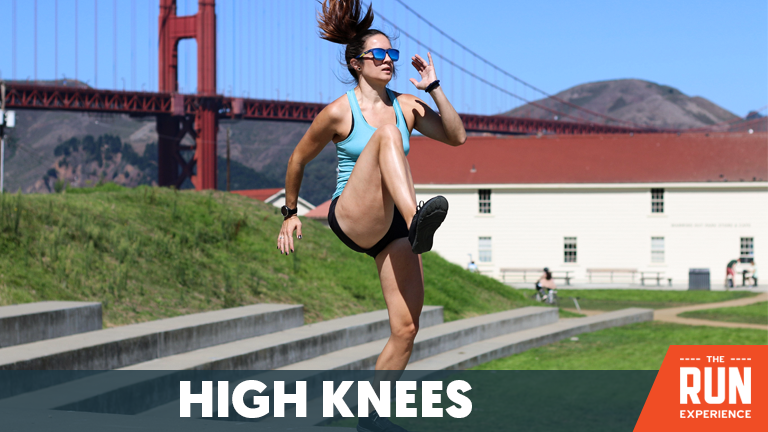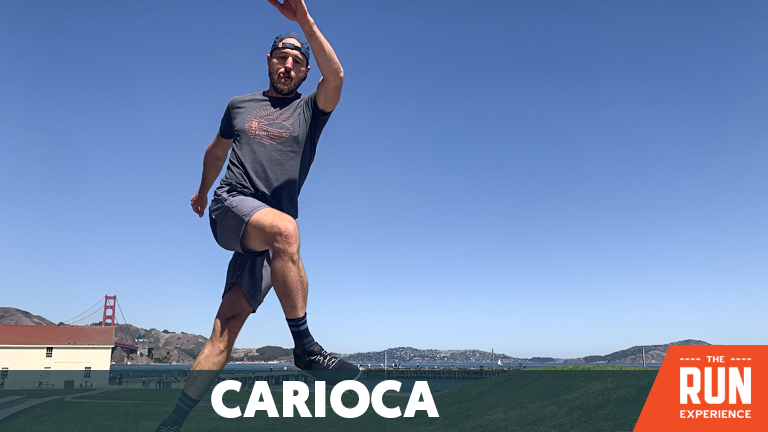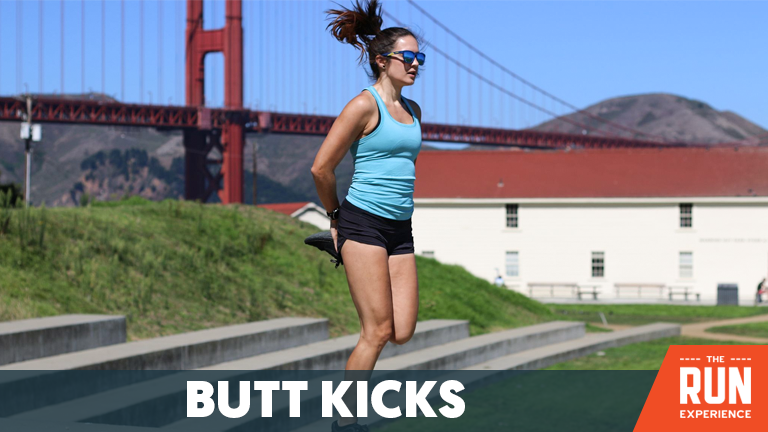Drills to Run Faster: Simple Speed Training Drills & Exercises
Incorporate speed drills into your training plan. These speed technique drills to run faster and workouts for runners will increase your pace & endurance.

Looking for speed training drills to run faster? It's going to hurt—no doubt about it—but it'll be worth it. Trust us.
It takes more than just consistent mileage to help you get faster and run your best races. Some distance runners have natural speed, and others don’t. However, no matter where you fall on that spectrum, it’s critical to incorporate speed training with speed drills into your training plan.
You’ll see the efforts pay off when you find yourself sprinting towards the finish line with an epic kick at the end of your next race!
Speed training drills might not be the favorite part of your running training, and that’s OK. Unless you’re training to become a sprinter, you really only need to incorporate these speed technique drills into your workout routine every now and then.
Read on to learn about 3 speed drills you can incorporate into your training program to increase your quickness.
Do You Need Drills to Run Faster?
Incorporating running drills into your routine can boost your speed, running economy, and overall performance. But are these drills essential for every runner who wants to pick up the pace?
The answer is yes, and here’s why:
Why Speed Drills Matter
- Improves Running Mechanics: Drills help reinforce proper form and technique. Efficient running means you can maintain a faster pace for longer periods without wasting energy. Drills such as high knees, butt kicks, and carioca improve coordination, agility, and balance, all of which contribute to better form.
- Enhances Muscle Activation: Speed drills activate the fast-twitch muscle fibers, which are essential for quick bursts of speed. These fibers are not typically engaged during slower, longer runs. Regularly practicing speed drills can help you tap into these fibers quickly, boosting your speed almost reflexively.
- Prevents Injury: Many running injuries stem from poor form and muscle imbalances. Speed drills can help strengthen the supporting muscles around the joints and improve range of motion, reducing the risk of injuries commonly associated with running.
- Increases Running Economy: Running economy refers to the amount of energy expended at a given pace. The better your running economy, the less energy you use and the faster you can run. Drills help improve your running economy by enhancing your neuromuscular coordination and efficiency.
Key Drills to Run Faster (AKA: Speed)
To effectively increase your speed, consider incorporating the following drills into your training regimen:
- High Knees: This drill helps improve knee lift and reinforces a powerful foot strike that propels you forward more efficiently.
- Butt Kicks: By emphasizing the hamstrings' role in your running gait, butt kicks help increase your stride rate and improve your kick phase, which is crucial for fast running.
- Carioca: This drill enhances hip flexibility and agility, which are vital for changing directions and maintaining balance at higher speeds.
- Strides: Incorporating strides at the end of your regular runs can help your body adapt to faster speeds without the prolonged stress of a speedwork session. They’re also excellent for improving acceleration and speed endurance.
Run Faster with Simple Speed Drills
Bringing speed training drills into your regular running plan doesn’t have to be cumbersome. You can add drills to improve speed into your warm-up, infuse them into the middle of your run, or tack them on to the end of your workout to help improve your speed—without adding much time to any single workout.
Let’s explore three of our favorite exercise to improve running speed:
1. Speed Drills: Running High Knees
Think of the running high knees exercise as running in place while driving your knees up as high as you can. It not only helps improve your speed, but they are also great for your running form, leg strength, and flexibility.

Here’s how to do running high knees:
- Stand with your feet hip-width apart.
- Drive your right knee up as far as you can, the quickly set it back down on the ground.
- Switch and do the same with your left knee.
- Aim for 30 seconds of three to four sets.
Remember, the point of running high knees is to go fast (while staying controlled) to improve speed. You should be getting your heart rate up, making it a great race warm-up exercise, too.
2. Speed Technique Drills: Carioca
It might sound a bit like karaoke, but this is a speed drill rather than a fun post-race entertainment activity! It involves a little footwork and will improve both your speed, hip flexibility, and range of motion.

Here are the steps:
- As you start moving laterally to your right, cross your left leg in front of your right leg.
- Then, cross your left leg behind your right leg.
- As you go, swivel your hips and raise your arms for balance
- As you get comfortable, quicken your pace. You want to be able to go as fast as possible while keeping good form.
- Do the carioca for 20 seconds on one side. Repeat on the other side. Complete three to four sets.
3. Speed Drills: Butt Kicks
You could almost think of butt kicks as the opposite of high knees. They are a fast-paced agility drill that gets your heart rate up, improves speed, and increases running efficiency by warming up your quads and fostering quick turnover.

Here’s how to do them:
- Start with a short running stride, almost as if you were running in place.
- Lift your knees only slightly and aim to bring the heel of your running shoe directly under your butt.
- Switch legs rapidly and keep your foot speed quick to promote turnover and improve speed.
- Do three to four sets of 30 seconds each.
Best Exercise to Improve Running Speed: Strides
Strides are great sprint drills for speed. They more closely translate into pushing the pace on endurance-style runs.
Strides were one of my favorite ways to boost my speed after a regular training run in college. I also used them to warm up before a race and start feeling the speed I’d need to use during the race.
Strides are simple. My favorite way to do them is by ending my run at the track and taking my shoes off, doing them barefoot in the grass. However, you can incorporate them into your run and you certainly don’t have to take your shoes off. Just be sure not to do them before your muscles are good and warmed up.
Simply sprint at about 80-90 percent effort for about 15 seconds. Jog back to your starting point (or jog forward if you are doing them during a run) to rest for about 30 seconds. Do another sprint for 15 seconds. Repeat six to 10 times to increase your turnover and develop killer speed.
This is one of the best speed training exercises for runners.
To wrap up, let’s follow along with Coach Holly in her video that will take you through an excellent 15-minute speed workout for runners that will have you running faster in no time:
How to Incorporate Speed Training Drills into Your Routine
Now you have the speed training drills, but when do you do them? Should they be added into your workout, or should you take care of them before hand (or what about afterwards)?
Here’s a detailed look at how and when to include these speed training exercises in your training plan:
Warm-Up Speed Drills
Warm-up drills prepare your body for the demands of a run. They serve multiple purposes:
- Increase Heart Rate: Gradually increasing your heart rate during the warm-up helps transition your body from a resting state to an active state, reducing the shock to your system when you start running.
- Muscle Activation: Drills activate your muscles by engaging the neuromuscular system, ensuring that your muscles are ready to efficiently respond to the demands of your workout.
- Injury Prevention: Properly warmed-up muscles and joints are less prone to injuries. Dynamic drills increase blood flow to your muscles, enhance flexibility, and reduce the risk of strains and sprains.
Post-Run Speed Drills
Performing drills after a run can be just as beneficial as pre-run drills:
- Cool-Down: Helps gradually lower your heart rate and prevents blood from pooling in your extremities, which can occur if you stop running abruptly.
- Enhance Flexibility and Mobility: Post-run drills can help maintain and even improve flexibility and mobility, which might be diminished after a long or particularly hard run.
- Muscle Relaxation: Helps in the relaxation of muscles that might have tightened up during the run.
Dedicated Drill Sessions
Dedicating entire sessions to drills and speed work can be particularly effective for runners looking to improve speed and technical efficiency. These sessions allow for:
- Focused Training: Without the fatigue from previous running, you can focus purely on the technique and quality of each drill.
- Higher Intensity and Quality: Allows for more intense and higher quality drill sessions, which can lead to significant improvements in speed and form.
- Recovery Time: Dedicated sessions should be followed by rest or easy running days to allow muscles to recover and adapt to the stress of intense speed work.
And here's how to conduct these drill sessions:
Plan the Session: Start with a light jog or easy run to warm up. Follow up with a series of dynamic stretches.
- Select Your Drills: Choose drills that target areas you want to improve, such as speed, agility, or running economy. Include drills like sprints, ladder drills, or agility cones.
- Intensity and Volume: Keep the drills short but intense. Focus on the quality of movement over quantity.
- Cool Down: End with a cool down consisting of gentle stretching to aid recovery and reduce soreness.
Want More Exercises to Improve Running Speed?
These speed training drills are just a taste of the game-changing potential out there. Speed workouts and technique drills will take you a long way, but you also need to consider training frequency, nutrition, recovery, and cross-training.
It can be a bit overwhelming—and that’s why we created The Run Experience mobile app. Download the app to follow along with coaching advice, daily video workouts, injury prevention tips, and complete training programs that will make you a better athlete and help motivate and inspire your training program every day!
Now that you know some simple ways to increase your speed and improve your running form with speed training drills, don’t stop there! Become the complete runner.
